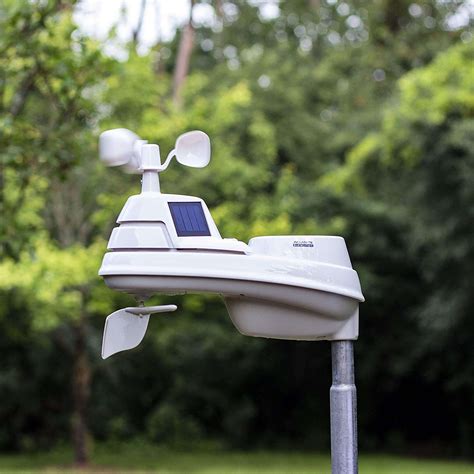In an age where data plays a crucial role in a myriad of fields, from agriculture to aviation, owning a personal weather station might seem like an indulgence. However, considering the versatility and functionality afforded by modern weather stations, it emerges as an asset that transcends mere hobbyist inclinations. Whether you’re a tech enthusiast, a weather hobbyist, or a homeowner interested in meticulous weather monitoring, owning a weather station can substantially enhance your local weather data’s precision and utility. Take the Weatherflow Tempest, for instance, which has been lauded for its easy setup, solar power capabilities, and integration features.
The Weatherflow Tempest stands out for its simplicity and efficiency. Users rave about its zero-maintenance design, primarily attributed to its elimination of moving parts, which significantly reduces the likelihood of mechanical failures. A user mentioned having had their Tempest operational for over three years without any intervention, enduring various weather extremes from scorching heat to frigid winters. This resilience suggests that such devices aren’t just for fair-weather enthusiasts; they are robust tools that can provide constant, reliable data regardless of the environmental conditions.
One of the most compelling aspects of the Tempest weather station is its integration capabilities. Many users have highlighted the ease of connecting the Tempest to various smart home systems and data platforms. For example, the base station comes equipped with a UDP port for real-time data access, making it straightforward to integrate with platforms like Home Assistant and Prometheus. This local data push capability means that even if the central cloud services provided by Tempest were to shut down, your local setup would remain unaffected. This was particularly noted by a user who had successfully interconnected their Tempest’s data stream to VictoriaMetrics via Prometheus, ensuring their data accessibility and usability remained intact.
Beyond the practical setup, the Tempest also includes a comprehensive API, encouraging users to build on their data collection to suit personal and research needs. There’s a keen interest in the home automation community for such integrations, enabling a myriad of applications from simple weather monitoring to complex energy management systems. The ability to use a straightforward Python script to sync data locally, or even broadcast to a larger network, exemplifies the flexibility and extendibility of this device. For those who enjoy tinkering, there’s a treasure trove of possibilities that can be unlocked – from custom dashboards to advanced data analytics, making it an inspiring piece of technology for DIY enthusiasts.
The community around personal weather stations further amplifies their value. Many users have lauded Tempest for its seamless data-sharing capabilities, notably its integration with the Citizen Weather Observer Program (CWOP), which relays data to NOAA. This automatic relay means that your hyper-local data can contribute to national weather models, enhancing the entire system’s accuracy. Furthermore, the community-centric approach fosters a sense of contribution beyond personal use. The aggregation of data from multiple stations can help pinpoint microclimate variations and improve predictive models, which is essential for professional meteorological services and climate research.
For those beginning their journey with weather stations, the Tempest offers a user-friendly introduction without sacrificing advanced features. Beyond the hardware, Tempest’s mobile app offers intuitive navigation and insights, making the setup process straightforward even for novices. Reviews from users have frequently highlighted the cost-effectiveness, ease of use, and the extended battery life, which is bolstered by solar power capabilities. One user noted that their weather station, positioned in a less-than-ideal shaded area during winter, managed to function adequately by switching to a low power mode, demonstrating its resilience and adaptive design.
In addition to Tempest, there are other reliable stations such as those from Davis Instruments or the Ambient Weather WS-2902C that also offer comprehensive data gathering and sharing capabilities. Each has unique features – from Davis’s proprietary sensors capable of measuring sophisticated parameters like soil moisture, to Ambient Weather’s custom endpoint capabilities that allow easier integration with personal databases and applications. These alternatives provide a rich landscape of choices based on your specific needs and budget constraints. Integrating these devices with platforms like weewx or leveraging data-export tools for local storage ensures that your valuable data remains accessible and useful over time.
Ultimately, the importance of contributing weather data goes beyond individual use. The collective data facilitates more accurate and localized forecasting, vital for various industries and public safety. As these networks grow, they create a web of real-time, precise atmospheric data that can revolutionize meteorological accuracy. Beyond technological thrill, owning and operating a personal weather station like Tempest becomes an act of public service, contributing to a robust, interconnected meteorological infrastructure.


Leave a Reply